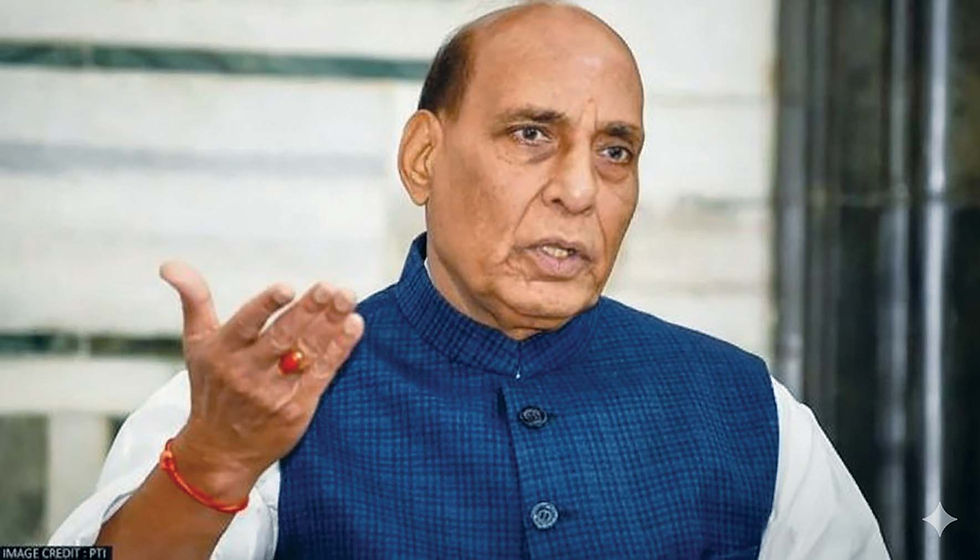Myanmar’s Perils for India
- Commodore S.L. Deshmukh

- Aug 18
- 4 min read

The Burmese dha, a long, straight sword used in the martial art of banshay, is said to possess a peculiar virtue: it can strike even when sheathed. Myanmar, long considered India’s gateway to Southeast Asia, increasingly resembles such a weapon. Its internal convulsions - civil war, refugee flows and Chinese encroachment - are cutting into India’s fragile northeast, testing the resilience of New Delhi’s Act East policy.
Few neighbours matter to India as much as Myanmar. The two share a 1,600-kilometre border and a maritime boundary in the Bay of Bengal. Myanmar offers India its only land bridge to Southeast Asia, where New Delhi hopes to extend influence and counterbalance China. Yet the military coup of February 2021, which plunged Myanmar into turmoil, has turned this strategic asset into a liability. The violence and political collapse across the frontier now carry consequences that India can neither ignore nor fully control.
Refugee Tide
The most immediate challenge has been the influx of refugees. Since the coup, thousands of people from Myanmar, especially from the Chin and Kuki ethnic groups, have fled across the border into the Indian states of Mizoram and Manipur. In Mizoram, shared ethnicity has encouraged local authorities to provide shelter and aid, even as New Delhi has looked the other way. The burden has strained resources in some of India’s poorest states and, more dangerously, exacerbated ethnic divisions on the Indian side of the border. The eruption of violence in Manipur in 2023 had many local causes, but the influx of refugees played its part in sharpening communal fault lines.
Porous frontiers invite other dangers. The Indo-Myanmar border has long been a corridor for smuggling of weapons, narcotics, timber and wildlife. The Free Movement Regime (FMR), designed to allow borderland tribes to travel 16 kilometres without visas, was meant to preserve cross-border kinship ties. Instead, insurgents and smugglers have used it to establish havens and supply routes. Methamphetamine pills produced in Myanmar have flooded India’s northeast, feeding addiction and fuelling public health crises. The Indian government is now keen to scrap or tighten the FMR.
Endless War
Inside Myanmar, the situation is daily deteriorating. The junta, or Tatmadaw, faces growing pressure from an array of ethnic armed organisations (EAOs) and the shadow National Unity Government (NUG). The fighting has spread to Rakhine, Chin and Sagaing states, areas contiguous with India. For India, this is doubly worrying. First, it threatens connectivity projects such as the Kaladan Multi-modal Transit Transport Project, which links India’s landlocked northeast to the Bay of Bengal. Second, it heightens the risks to trade routes like the Moreh-Tamu border market, vital for bilateral commerce. Every clash across the border carries the possibility of spillover into Indian territory.
The crisis also undermines India’s Act East policy. Since the 1990s, successive governments have tried to use Myanmar as a launchpad for greater economic and political ties with ASEAN. But instability has stalled infrastructure projects and discouraged investors. More critically, it has left India looking reactive, even timid, compared with China’s muscular presence.
Beijing’s Shadow
No actor has capitalised on Myanmar’s turmoil more than Beijing. China has poured billions into infrastructure, including pipelines carrying oil and gas from the Bay of Bengal to Yunnan province, and the China-Myanmar Economic Corridor, which could one day give it access to the Indian Ocean. Such projects grant China strategic leverage over India’s eastern flank. Myanmar’s ports and naval facilities may soon host Chinese ships, extending Beijing’s reach into the Bay of Bengal.
The imbalance is stark. India’s trade with Myanmar is a fraction of China’s. While Indian projects languish in bureaucratic delays and security risks, China’s state-owned giants advance steadily. The result is a shifting regional balance of power that leaves India both economically sidelined and strategically vulnerable.
New Delhi is not blind to these dangers. It has sought to maintain ties with Myanmar’s junta while quietly engaging with other stakeholders, including EAOs and the NUG, especially in regions abutting the Indian border. It has invested in development projects, from roads to power transmission lines, as a way of signalling commitment. And it has sought partners like Japan, ASEAN, even America to counterbalance China’s dominance.
But the options are narrow. Overt support for Myanmar’s resistance risks retaliation from the junta and pushes Naypyidaw closer to Beijing. Abandoning the FMR entirely could inflame resentment among border tribes who see themselves as part of a wider ethnic continuum. And disengaging altogether would concede the field to China.
A more nuanced approach is needed. Analysts recommend that India deepen relations with actors beyond the junta, especially those controlling territory along the border. Greater coordination between New Delhi and its northeastern states is vital, ensuring that refugee policy and border security reflect both national interests and local realities. Development assistance should be recalibrated to reach communities most affected by conflict, building goodwill where the junta cannot. Any move to revise the FMR must be carefully calibrated to curb smuggling but not severing the people-to-people ties that lend legitimacy to Indian presence in the region.
Myanmar today is both a humanitarian crisis and a geopolitical faultline. For India, it poses a major statecraft challenge: how to shield its fragile northeast from instability, maintain a foothold in Southeast Asia, and prevent China from tightening its grip on the Bay of Bengal. Failing to act wisely would leave India exposed to a neighbour that, like the dha, can wound even without drawing its blade.
(The author is a retired Indian Naval Aviation Officer and a geo-political analyst. Views personal.)





Comments